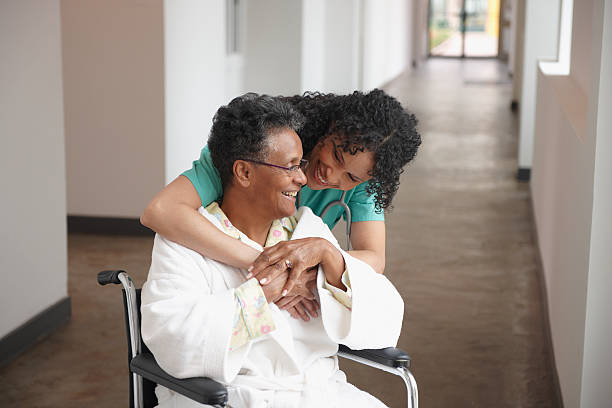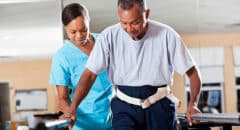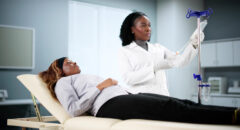
Of the nearly 800,000 strokes suffered by Americans each year, roughly 87 percent of them are ischaemic strokes. An ischaemic stroke occurs when blood flow to the brain is blocked, and the patient must undergo a life-saving thrombectomy procedure. It is during a thrombectomy when an arterial clot is surgically removed to restore blood flow to the brain.
Strokes are typically thought to predominantly affect the elderly in our communities. In 2022 the American Heart Association reported a decline in strokes among those aged 75 or older.
At the same time, people aged 49 or older were seeing an increase in stroke events, currently the leading cause of long-term disability.
The Black community, in particular, has seen the highest incidence of stroke in the United States. Black American men are 70 percent more likely to not survive a stroke, while Black women are twice as likely to suffer strokes compared to their white peers.
In any case, the steps to post-stroke recovery will be different for each patient, depending on the type and severity of the stroke. A mild ischaemic stroke, for example, leaves enough room for speech recovery to make a significant impact.
RELATED: Life after Stroke: Tips for Recovering Communication Skills
About one-third of stroke survivors require some form of speech and language therapy. The resulting aphasia that occurs right after a stroke means the patient has difficulty reading, writing, and understanding others.
Most mild stroke patients see positive results from therapy and regular practice sessions within six months. While there is no cure for aphasia, there is every reason to stay an active and engaged member of the community, with the right support.
The best and most caring approach during the first few weeks and months is to speak to the patient slowly and in shorter sentences using simpler words. It’s important to remember that stroke patients are not less intelligent, but take longer to process and regain the meaning of the world around them.
Because a patient’s ability to communicate verbally may be affected, the tongue and lips must be exercised for speech, much as the legs are conditioned for walking or running.
Incorporating detailed real-time events into the conversation is also beneficial, such as discussing the weather or asking the patient to describe an item of clothing they are wearing.
Reading to the patient helps restore comprehension, especially when asking simple questions about the story to strengthen recall ability. Practice writing exercises by writing a sentence with a missing word for them to complete, or words with missing letters. Study a recipe, and the ordered steps of how the recipe becomes a dish.
Environmental factors to consider during the recovery phase include making sure the space where rehabilitation is taking place remains quiet and free of distraction.
It’s important to always face the patient when speaking to them so they can clearly understand what is being communicated, and be clear when a topic of conversation has changed. Do not speak over the patient, and make sure only one person is speaking at a time to avoid confusion.
Be conscious of moments when the patient might be tired of using the part of their brain to recall language, and switch to art therapy. One method popular among many art classes is a collaborative game called Exquisite Corpse, where two or more people add to a sequential composition.
The person who draws first folds their drawing over so the next person can’t see what they drew, but they follow the same instructions to draw a section and fold it over so the next person can continue the process. It often results in a fun and interesting creation of different styles in the same drawing, and enhances the sense of community and much-needed support.









